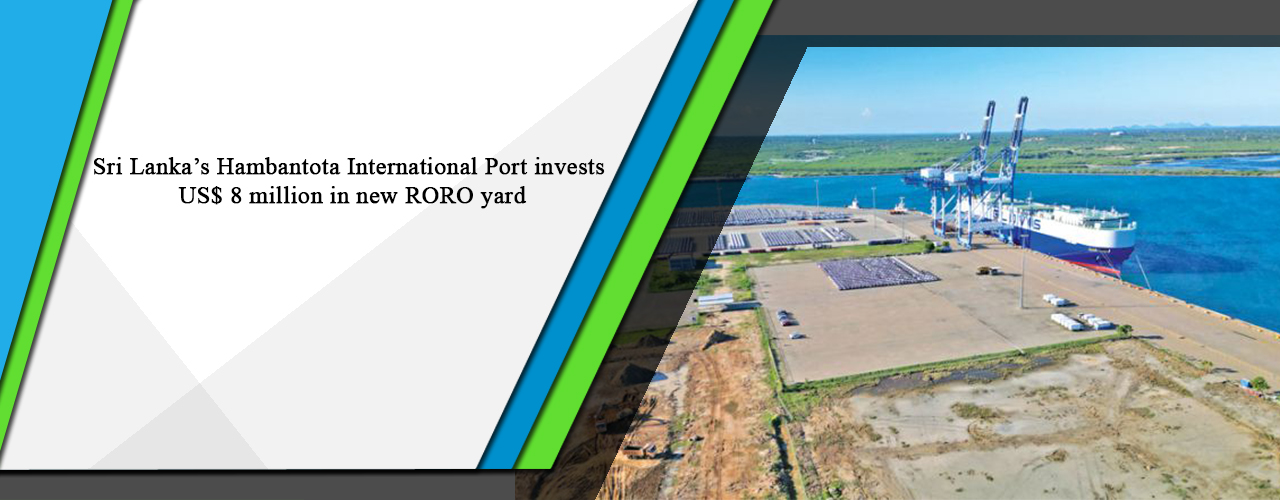Sri Lanka’s Hambantota International Port invests US$ 8 million in new RORO yard
Ada Derana: With more RORO ships calling at the Hambantota International Port (HIP), the port will be adding a further 5000 slots to accommodate transshipment vehicles. HIP, which currently has the capacity to accommodate approximately 28,000 units, services nine main shipping lines who actively use the port for transshipment of RORO cargo. With large volumes expected via several shipping lines in the coming months, the port management considers the rapid expansion of the RORO yard an urgent necessity.
In line with that, HIPG has made a US dollar 8 million investment to build another 68,000 m2 of parking space. The facility which will be completed within the next 7 months, will have a yard to berth distance of 55m.
“HIP is becoming an attractive destination for RORO transshipment due to a combination of factors, the top most marketable aspect being our reliability, closely followed by our safety standards, speed of execution and strategic location. As the global economy gradually improves, we expect to see a further increase of our volumes. In order to give confidence to its customers, HIPG will continue to make investments in areas of strategic importance to the long term development of HIP. This is a continuous process and is done in line with global trends to build capacity ahead of demand,” says Tissa Wickramasinghe, COO of Hambantota International Port Group.
RORO volumes at HIP have reached over 271,000 units as at May 2023, and the port plans on seeing a significant growth in the number by the close of the year.
OSL take:
Sri Lanka’s maritime industry has recorded a growth in the past few months with signs of further expansion in the months to come. The country’s geographical positioning in the Indian Ocean, especially the close proximity to international maritime lanes have helped boost Sri Lanka’s maritime industry. The growth in the maritime industry has also increased the constant need for development and uplifting of facilities in the maritime industry, especially in the ports, shipping and logistics sectors. Therefore, there’s a requirement to develop supplementary infrastructure facilities required by the maritime industry in line with the level of growth of the industry. With Sri Lanka working towards becoming an emerging business destination in the South Asian region, foreign businesses/investors could explore the expanding opportunities in Sri Lanka’s maritime industry. Given the profits recorded by the country’s businesses in the maritime industry, foreign businesses/investors could also look at forming partnerships or joint ventures with these businesses with the aim of further expansion.
| Article Code : | VBS/AT/20230626/Z_7 |

